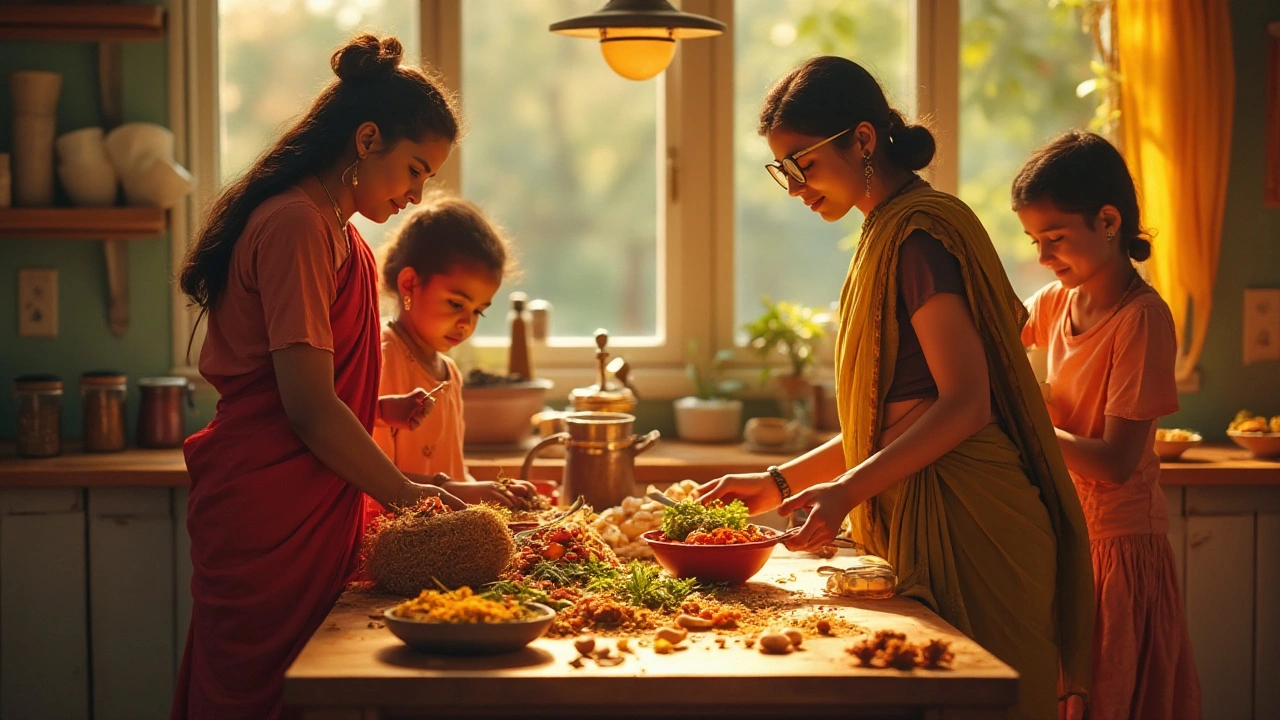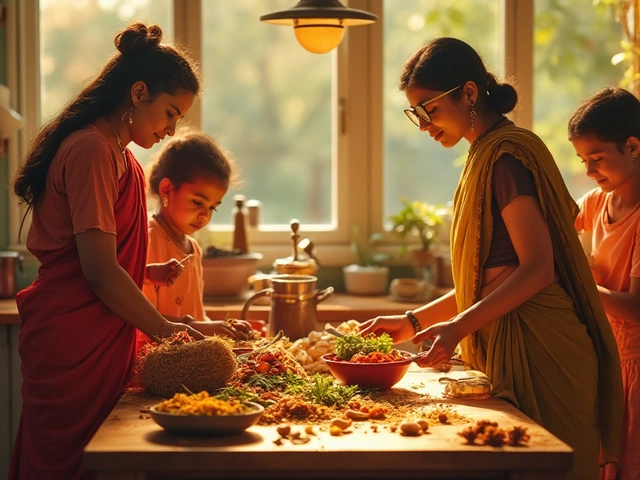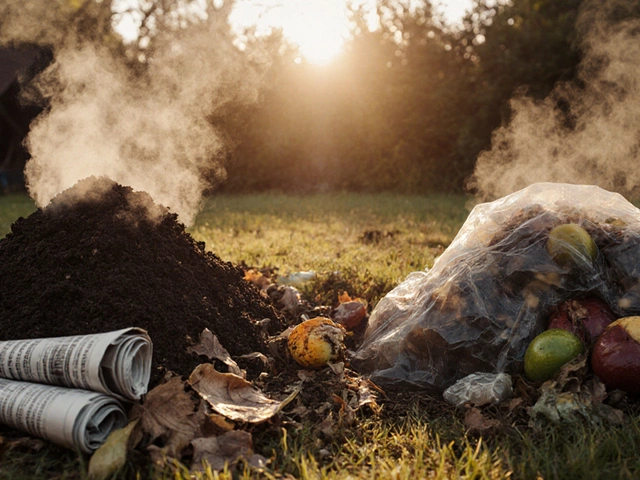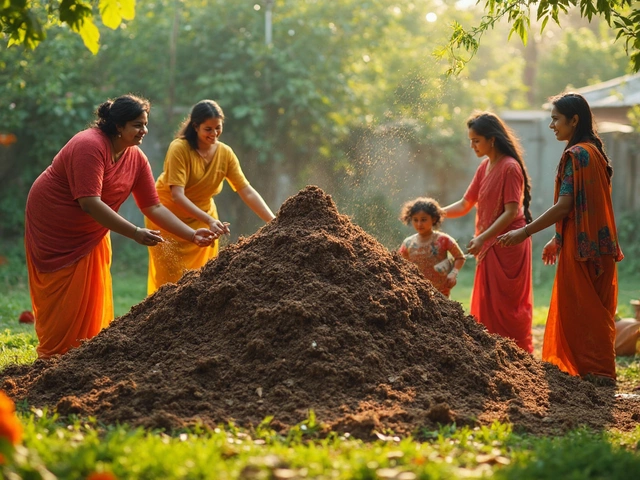Creating a thriving, homemade compost pile isn't just about tossing in lettuce leaves and coffee grounds—it requires understanding what belongs and what doesn't. It's tempting to throw every organic scrap or waste product into your backyard bin, but a little knowledge goes a long way in creating nutrient-rich compost.
While vegetable peels and eggshells are wonderful carbon and nitrogen sources, there are other materials you should keep out of your pile. Some might surprise you, but with good reason. Not only do these items slow down decomposition, but they can also invite pests or disrupt the delicate biochemistry of your growing heap.
Join us as we delve into the little-known aspects of home composting, revealing the secrets to lush gardens by knowing exactly what should be left out of the mix.
- Understanding the Basics of Composting
- Why Some Items Don’t Belong
- Common Items to Exclude
- Environmental Impact of Bad Composting Practices
- Safe Alternatives for Unwanted Waste
- Pro Tips for Thriving Compost Piles
Understanding the Basics of Composting
Composting is a natural process that breaks down organic material to form a rich, soil-like substance that works wonders in gardens and farms. At its core, homemade compost is about harnessing natural processes to recycle waste effectively. This practice isn't just about reducing kitchen garbage; it's about creating a living ecosystem where bacteria, fungi, and other microorganisms thrive. These tiny agents are central to decomposing materials like fruit peels or grass cuttings efficiently.
At first glance, most might think composting involves merely collecting organic waste in a pile and letting nature take its course. While that's partly true, successful composting demands a delicate balance between 'green' and 'brown' materials. 'Green' materials—like vegetable peels and coffee grounds—provide nitrogen, essential for feeding the beneficial microbes in the pile. Meanwhile, 'brown' materials like dried leaves and shredded paper offer carbon, giving structure to the pile and promoting airflow. Maintaining proper ratios ensures a healthy composting process, avoiding the pitfalls of a slimy, smelly pile that's neither attractive nor useful.
A significant part of mastering this is maintaining the ideal moisture level and turning the pile regularly. Water fosters microbial activities that break down the compost, but too much creates an anaerobic (oxygen-less) environment. Periodically stirring the pile ensures all parts have access to air, promoting faster decomposition and preventing foul odors. Once achieved, that sweet earthy smell signifies success in organic compost making and an impending, nutrient-rich reward for your garden.
According to a study by Dr. Bruce Lan of the Environment Institute, "Composting can reduce household waste by up to 30%, saving landfill space whilst directly contributing to the health of your gardening efforts." And that's the magic of composting—it turns refuse into a resource, whilst supporting sustainability. It's worth noting that this simple practice can also sequester carbon, aiding environmental efforts to keep planet Earth balanced against the ravages of climate change. Home composting is a small contribution with a big impact.
Why Some Items Don’t Belong
Composting is a beautiful marriage of art and science, combining the natural decomposing prowess of microorganisms with our domestic waste. Yet, not every organic material is suited for this harmonious process. First, certain items can introduce toxins or diseases. For instance, plant-based scraps like apple cores may be innocuous, but if they are laden with pesticide residues, they bring harmful chemicals into your homemade compost. Over time, these chemicals may not break down fully in home compost piles, potentially seeping into the soil and harming plants.
Another critical aspect involves anatomy, that is to say, the structural makeup of different materials. Items such as dairy products and fats from meats have rich chemical complexities that break down erratically, often leading to undesirable odors. These smells are not only unpleasant but can also act as a magnet for pests like rodents and flies. Unlike simple organic waste, these tough-to-compost items require industrial-grade setups equipped with higher temperature regulation to ensure proper decomposition without the bother of pest infestations.
The balance of carbon to nitrogen ratio is another key consideration. Essential to composting efficiency, this ratio can be disrupted by the introduction of certain materials. Take, for example, citrus peels or onions: while they are great sources of nitrogen, their concentration can acidify the compost, slowing down microbial activity. The most successful composting tips usually underscore maintaining this delicate equilibrium to optimize the process.
Pathogens pose another concern, particularly when it comes to pet feces. It might seem environmentally friendly to compost these wastes, yet they harbor harmful bacteria and parasites that can persist beyond the composting cycle. This fact underscores the importance of awareness in composting practices. As expert gardener Marion Houston advised, "Composting requires understanding that not all organic is equal; something that can harm your soil health over time if ignored."
Toxicity isn't solely limited to chemical residues either. Some plant materials, notably weeds with mature seeds or invasive plant species, harbor their own risks. The resilient seeds may survive the decomposition process, rekindling their invasive journey once the compost is applied to your garden. Similarly, plants treated with persistent herbicides could continue to exhibit their suppressive effects on your blossoming garden plants, disrupting the thriving cycle meant for your soil.
Common Items to Exclude
As you eagerly collect scraps to feed your homemade compost, it’s important to remember that not everything makes good compost material. One of the primary considerations is the potential to disrupt the composting process or harm the environment. For instance, most newcomers to composting aren't aware that meat scraps and bones should be avoided. These materials can attract pests, like rodents or raccoons, thanks to their alluring scents. In addition, they decompose at an agonizingly slow pace compared to plant matter, leading to unpleasant odors and a less efficient compost pile.
Dairy products fall into a similar category. Milk, cheese, and other dairy items can create a foul smell as they break down, unwelcome in any setup aiming at producing a flourishing garden bed. On top of their odor issues, dairy attracts the same kind of problematic scavengers as meat products. While the temptation to use dairy as a form of nitrogen in your compost may arise, the unintended consequences aren't worth the minor benefits.
Organic waste from oils and fats is another notable exclusion. Though technically part of the natural food cycle, the high-fat content skews the delightful balance your compost desires. Oils coat the materials in your pile, leading to a reduction in airflow and making it harder for microorganisms to break matters down effectively. The oily residues can also attract insects and pests, leading to an inhospitable gardening environment. Your compost should remain a place where beneficial microbes can work, and oils simply don't fit the bill.
Many inexperienced composters wrongly assume that all natural materials are compostable, but beware—some leafy additions are harmful rather than useful, says the renowned horticulturist Marian Desmond. Misconceptions abound, but understanding what shouldn't be part of your compost pile makes the practice empowering and efficient.
While you may think pet waste from cats or dogs is acceptable in the compost heap, it's notably excluded due to potential health risks. This waste often contains pathogens that aren't easily killed off in the typical home compost setup. Including such matter, therefore, introduces risks to anyone handling the compost or consuming produce where the compost is applied. It’s safer to stick with plant-based additions from your kitchen.
To cement the list of prohibitions, teabags and coffee grounds seem like perfect candidates but watch out for the remnants. Non-biodegradable materials like certain tea bag strings or coffee filters can hinder the process instead. With composting's success often depending on the small details, these seemingly minor intrusions can accumulate over time to become a major inconvenience. Tender to these nuances ensures your composting tips lead to flourishing results.
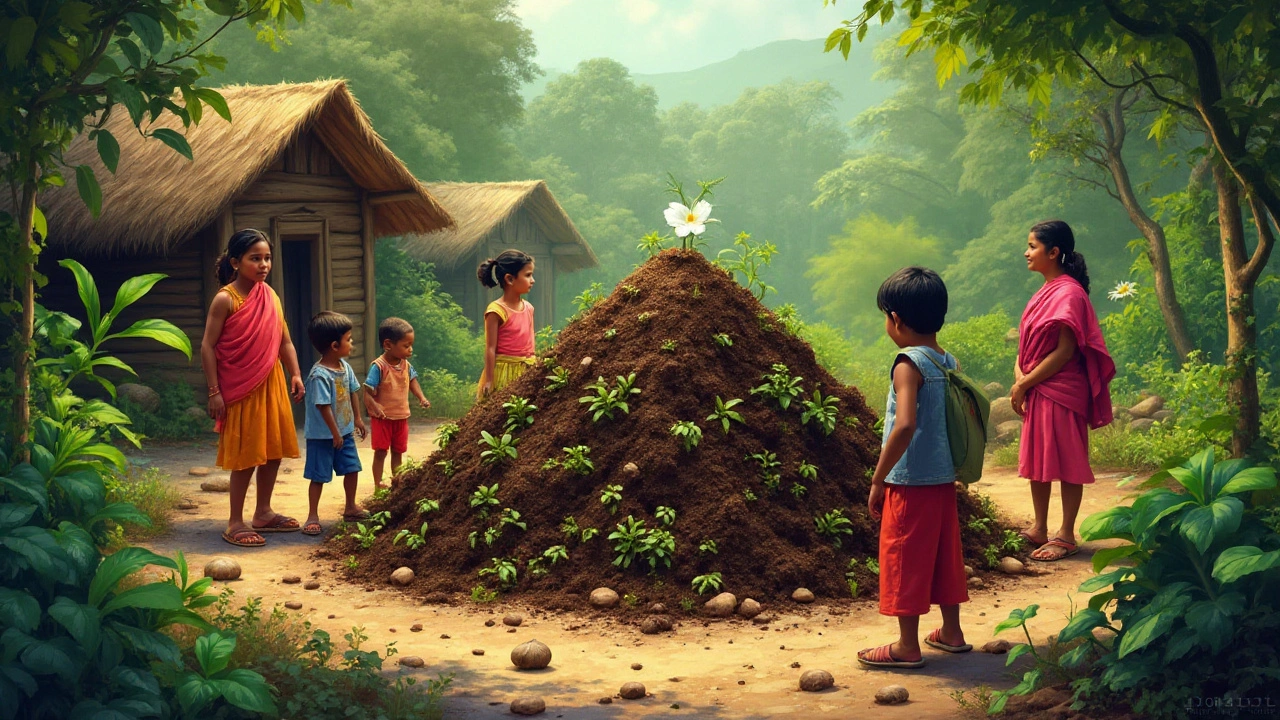
Environmental Impact of Bad Composting Practices
When embarking on the journey of compost creation, it's essential to recognize the potential environmental consequences of missteps along the way. Poor composting habits can lead to serious ecological repercussions, not only diminishing the quality of your own compost but potentially impacting the surrounding environment. One major issue with flawed composting practices is the failure to achieve proper aeration and balance, resulting in embarrassing odors that stem from anaerobic decomposition. Such conditions, devoid of adequate oxygen, lead to the production of methane—a harmful greenhouse gas that contributes significantly to the acceleration of climate change.
Another impact worth noting is the unintended propagation of unwanted plant species, often termed invasive species. When seeds from weeds or diseased plants are added to a compost pile without being properly processed, they can survive the composting cycle and spread into gardens and natural landscapes, at times outcompeting native flora and altering habitats. A further consideration is water contamination. Improperly constructed compost piles can produce a liquid runoff known as leachate, which, when seeped into waterways, potentially introduces pollutants like nitrogen, leading to algal blooms and harmed aquatic ecosystems.
Another critical factor to remember is the introduction of pest attractants. Items such as meat, dairy, and oils should be avoided as they can attract rodents, raccoons, and even bears in some regions. These animals, while naturally curious, can disturb the compost pile, leaving a larger environmental mess and requiring municipal intervention. Theodore Smith, an environmental scientist, once wisely remarked, "Composting is an art of balance and understanding nature's rhythm; disruption can lead to unintended ecological cacophony."
Theodore Smith, an environmental scientist: "Composting is an art of balance and understanding nature's rhythm; disruption can lead to unintended ecological cacophony."
Additionally, there is the question of toxic substances seeping into compost piles. If you add treated wood or chemically-laden products, they can permeate through the soil, affecting not only your garden's produce but possibly leaching into the groundwater system. This problem underscores the importance of being mindful of what goes into your homemade compost. A table illustrating common items to exclude and their potential environmental impact can be a helpful guide for beginners. Ensuring that these items remain outside of your compost pile is a simple yet effective measure to create a safer, cleaner, and thriving environment.
Safe Alternatives for Unwanted Waste
In the quest to create sustainable, homemade compost, discovering safe alternatives for the waste you cannot include is crucial. Some items simply don't belong in your compost pile, but that doesn't mean they must find their way to a landfill. With a bit of creativity, you can repurpose many of these materials. Take dairy products, for instance, which can attract vermin and smell as they decompose. Instead of tossing them, consider mixing them with birdseed in the colder months—birds often benefit from the additional fat. It’s amazing how such a simple switch can make a difference in waste management.
Meat scraps are another compost no-go; they take a lengthy time to break down and introduce odors. Luckily, some local zoos or animal sanctuaries accept meat donations for carnivorous inhabitants. A fascinating fact is that large felines adore these treats, and your contribution could support their diet. This way, you make the most out of what would otherwise be discarded. It's a win-win scenario, emphasizing how reducing waste can unfold in unexpected yet meaningful ways.
"Recycling and composting are key practices for reducing waste; however, only proper educative efforts can unleash their true impact," suggests Dr. Jon Linwood, a prominent environmentalist. Keeping informed is part of the journey.Items like treated wood, which is prone to releasing toxins, also require careful disposal. Unpainted, scrap wood fragments become suitable firewood alternatives, provided they aren't chemically treated. By engaging community bulletin boards, you may uncover locals who appreciate reclaimed wood for art or DIY projects. The community itself can be an instrumental resource, generating opportunities to keep materials in circulation longer. These small acts help sow seeds of environmental mindfulness.
While acknowledging the limitations of composting materials, plastic bags top the list as notorious contaminants. They persist for centuries and are often mistakenly added to compost heaps. Educate yourself about nearby drop-off locations that recycle these bags responsibly—they often convert them into composite lumber or new bags. Research frequently reveals greener routes. Embracing the power of reusing and recycling effectively advances our efforts in composting and overall sustainability.
Pro Tips for Thriving Compost Piles
Achieving that black gold, as gardeners affectionately call compost, involves a bit of science and artistry. Armed with these pro tips, your homemade compost will not only break down effortlessly but will provide your garden with the nutrients it craves. The first and most critical step is to get the balance right between green and brown materials. Think of greens as nitrogen-rich life-givers—like vegetable scraps, fresh grass clippings, coffee grounds, or even that catnip Fluffy loves so much. In contrast, browns are carbon-rich and key to aeration, such as dried leaves, straw, and cardboard. Aim for a balanced mix of these to fuel decomposition.
Next, keep your compost pile moist but not saturated—it should feel like a damp sponge. Without adequate moisture, the microbes calling your pile home won’t be able to do their job. Aeration is another essential; turning your compost pile every few weeks with a pitchfork allows oxygen to penetrate, accelerating the breakdown while keeping foul odors at bay. To help you remember when it's time to turn, consider marking it on your calendar with a little ‘C’—after all, composting is about routine.
Keep Pests Away
A thriving compost pile also means a pest-free one. This boils down to effective layering techniques and strategic placement. Begin with a thick layer of carbon-rich browns at the bottom, which acts as a base layer for drainage. Then alternate layers of greens and browns, ensuring that food scraps are always covered by a brown layer. This simple tip can drastically reduce pesky invaders like raccoons or rats, which can otherwise become uninvited guests. Position your pile or bin in a sunny spot if possible; the extra heat can speed up the decomposition process remarkably.
Consider utilizing a compost thermometer to keep an eye on the internal temperature. When it reaches between 120°F and 170°F, it means your pile is active. A well-tended compost pile heats up, killing unwanted pathogens and weed seeds. Trust me, it’s a game-changer knowing precisely what’s happening beneath those layers. If you're really feeling experimental, try adding worms. They can naturally aerate your pile and break down organic matter even faster. As Charles Darwin once remarked,
"The plow is one of the most ancient and most valuable of man's inventions, but long before he existed, the land was in fact regularly plowed, and still continues to be plowed, by earthworms."
Timing and Patience
Patience is a virtue when it comes to composting. It’s easy to become frustrated when you don’t see immediate results after a few weeks. Depending on the size of your pile and the materials used, the process can take anywhere from a few months to a year. The right conditions can, however, significantly speed up this timeline. Invest time in managing your compost actively; after all, it’s an investment in your garden’s future. You might consider setting a date each month to assess the state of your pile, a perfect opportunity to add or remove elements as needed. Each effort you make brings you closer to harvesting nutrient-rich compost that promises a better yield and healthier plants. Remember, composting is as much about the journey as the destination. Consider it your quiet rebellion against waste and a personal contribution to a greener planet.
